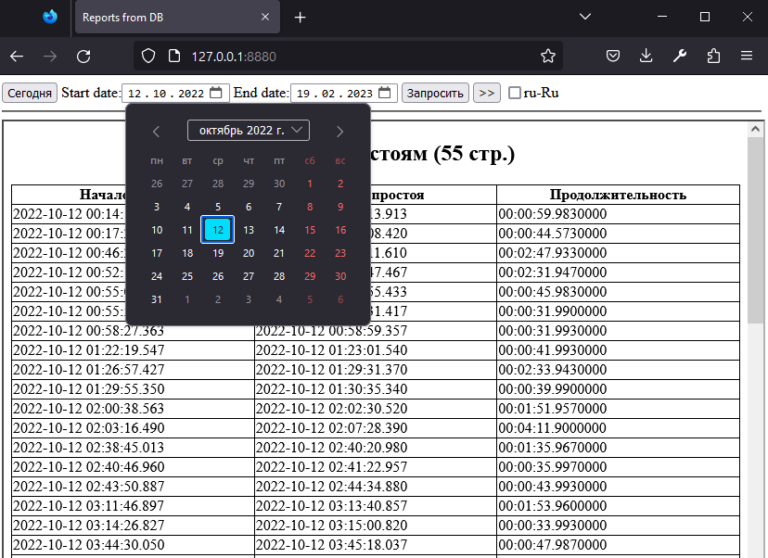The Great Chinese Conspiracy or how I remade a Bluetooth speaker
Waves spectrum and phase analyzer
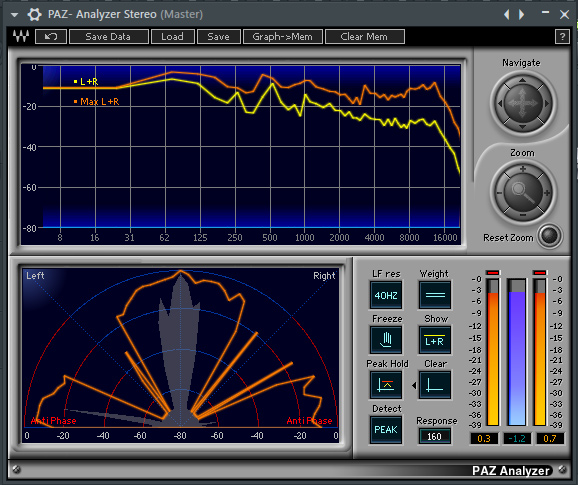
On the other hand, there are still non-monocompatible recordings, and the reasons for this are very different: the lack of qualifications of engineers, their creative intent, the wishes of the artists themselves, etc.
Well, the problem is indicated, we will solve it.
Solution 1
First of all, let’s open up our patient and see what’s under the hood. Unfortunately, there is no photo of the contents in its original form. Inside are two speakers, a passive radiator, an 18650 battery, and a main board.
Photo of the main board
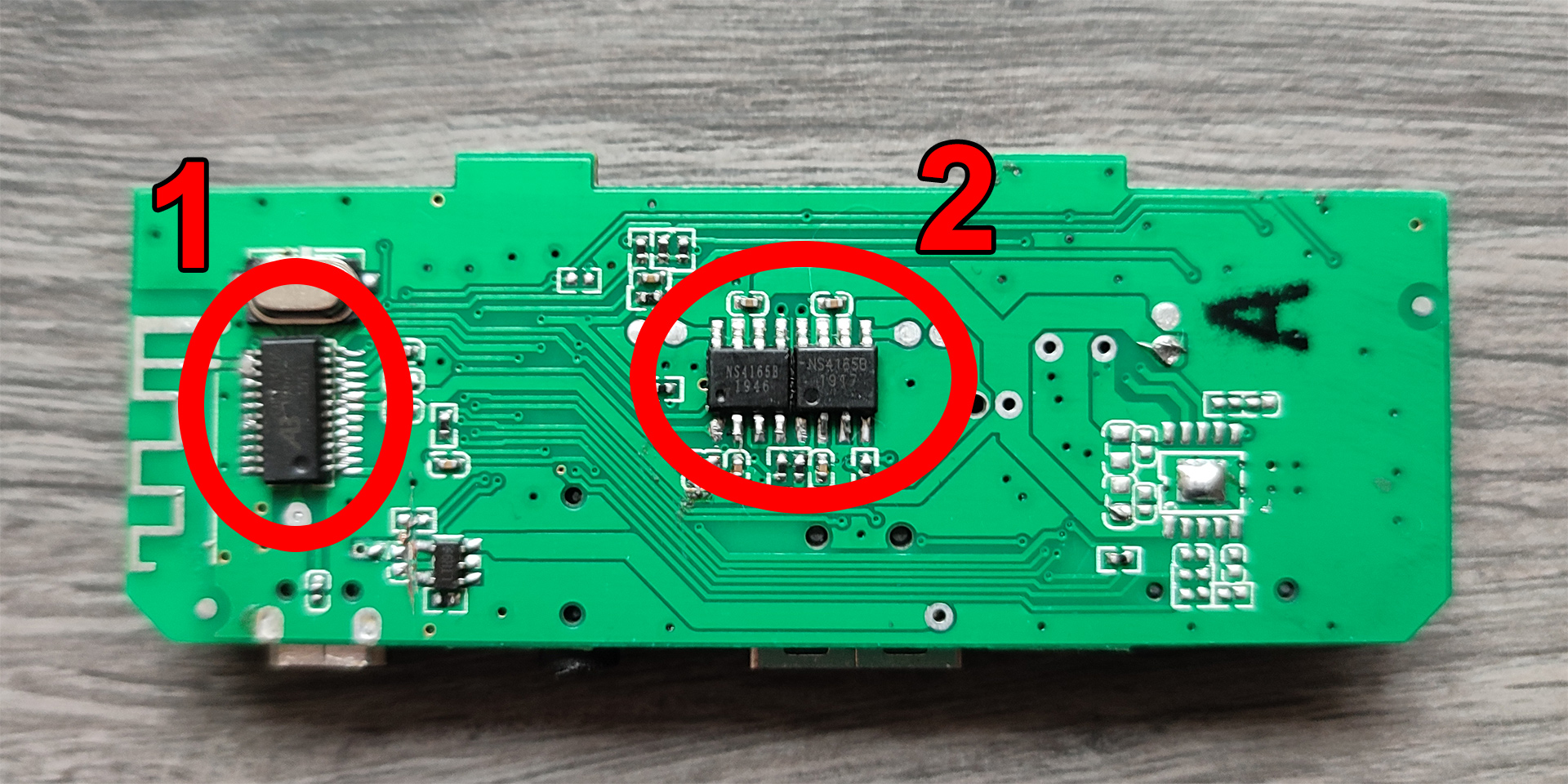
On the board, we are interested in the main chip (1) and two (!) amplifier (2). I could not find a datasheet for the main microphone, but for Chinese devices this is a common thing (it happens that microcircuits are installed without marking at all). The fact that the two chips next to each other are amplifiers can be installed without a datasheet. If you look closely, a couple of patches go away from them. On the other side of the board, these are the connectors to which the speakers are connected.
Finding the datasheet NS4165B, we make sure that this is a Power Amplifier (amplifier). Entrance on the 4th leg. We turn on the column, poke a finger on the 4th pins of both microcircuits and voila – the background is either in the left or in the right channel.
I chose such a clickbait title for a reason. First, the problem with mono, as it turned out later, was with all the copies presented in that store, regardless of price. And secondly, we see two amplifiers and two audio outputs from the main board on board. Accordingly, it can be assumed that the summation is implemented in the firmware. Otherwise, why draw conclusions for two channels, if they always have a sum? And similar microcircuits with the same pinout and the same voice interface (for sure, many have heard this unique Ze bluetooth device from ready to pal) I met in different devices with a normal stereo. Is this not a conspiracy?
I can only suggest one objective reason. These speakers, according to the manufacturer, are able to use TWS (I have not tried it). This is a mode of operation in which two speakers are connected to a Bluetooth source and one plays the right channel, the other the left channel. Do you want stereo? Take two! But via USB / microSD / AUX you have to be content with the amount.
But it’s all poetry. What are the options? It would be possible to get confused, look for firmware (that’s another quest), but, having studied the topic, it became clear that these boards are bricked with firmware once or twice (for example, often after the firmware the USB port stops working, through which, in fact, the device is sewn) . And not hardcore.
For me, the Bluetooth function is not essential, one microSD card will suffice. To my delight, in boxes with all sorts of electronics, there was a Chinese mp3 player, which is not a pity to tear it apart.
Sample player
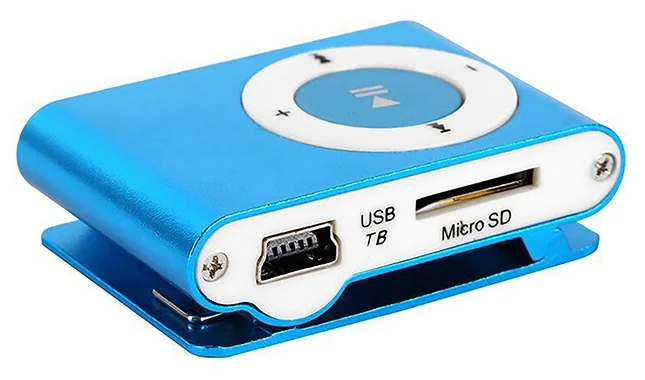
The plan is this:
We raise the 4th legs of the amplifiers on the speaker board.
We connect the audio output to them from the mp3 player board through a capacitor and a resistor (according to the datasheet).
We remove the microSD connector on the mp3 player board.
We connect the pins of the microSD connector of the mp3 player with the legs of the microSD connector on the speaker board with a cable.
On the speaker board
with an axwith a knife we cut all the tracks going to the microSD connector.We are looking for power on the board and powering the player board from there.
On the speaker board, we cut all the tracks going to the control buttons.
We connect the outputs of the player buttons with the control buttons on the speaker board with a cable.
Here I am very sorry that there is no photo. The work was, by my standards, jewelry. But there was an unresolved problem – our column is constantly on. This is where I didn’t bother. I threw out the antenna and put in its place a brutal toggle switch (there will be photos below) into the battery gap. Fortunately for me, when the power was turned off / connected, the board turned on not in STAND BY, but in operating mode.
We launch. Everything is working. But not without problems. Firstly, you can only charge the device when it is on, which is not very convenient. Secondly, the memory card periodically falls off (most likely, the problem is in the long cable). Thirdly, there are small pickups (most likely, from long wires from the source to the amplifier or due to the hinged mounting of the resistance with the capacitor). We will look for another solution.
Solution 2
I didn’t want to spoil the appearance of the speaker, but, as you can see, I’m not really an esthete =))) Therefore, it was decided to completely get rid of the main board.
I am full of determination
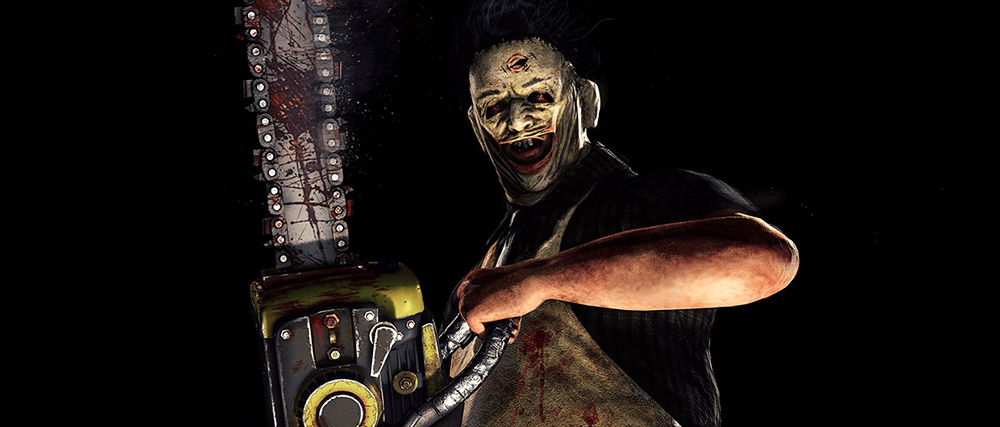
I
Use as sound source like this Bluetooth / mp3 / FM / SD / USB / AUX module (hereinafter referred to as the mp3 module for short), take as an amplifier amplifier board on a chip PAM8403 (I have a couple of pieces lying idle for a long time), power all this happiness charge board based TP4056 (also had a couple of pieces).
Flowchart 1

Upon arrival of the mp3 module, I dismantled the speaker, cut a hole for it in the case with a hacksaw blade, connected everything according to the block diagram, turned it on and … the mp3 module does not work. The problem is that it needs 5-12 V power, and on our battery the power range will be within 2.5-4.2 V. But in my closet, thank God, you won’t find anything. Booster came to the rescue DC‑DC Converter on MT3608. We put our savior in the gap between the TP4056 output and the power supply of the mp3 module and everything is ready.
Flowchart 2
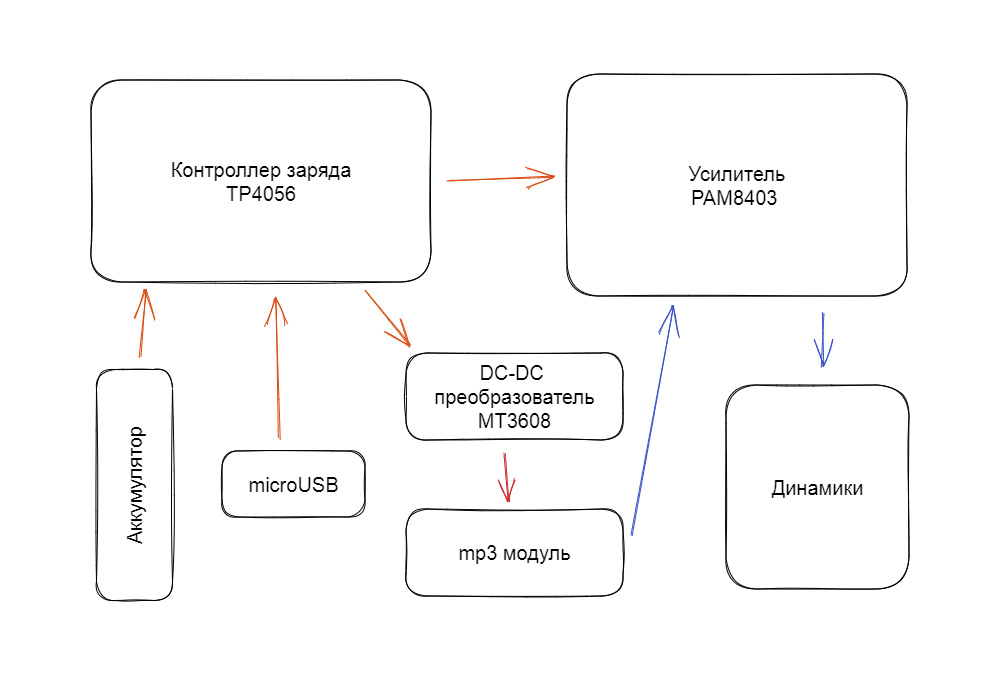
Our mp3 module has one significant drawback, which is inherent in many Chinese Bluetooth audio devices: the volume of the Bluetooth audio interface does not depend on the playback volume set. And when you turn on the speaker, you hear a loud sound next, signaling your readiness to accept the connection. I also solved this problem in a not the most sophisticated way – I put a separate toggle switch in the power gap of the amplifier. Now you can turn on the mp3 module, connect via Bluetooth, and only then turn on the amplifier.
After we abandoned the factory board, there were through holes at the back from the memory card, USB and AUX ports. Although the niche of the board is acoustically isolated from the main working volume, and these holes will not affect the sound, they will not stop annoying. We fill them with blue ABS plastic, and attach a board with a connector to the microUSB hole with a Soviet bolt, through which we will charge the column. Ugly, but reliable.
Photo. The faint of heart should not watch.
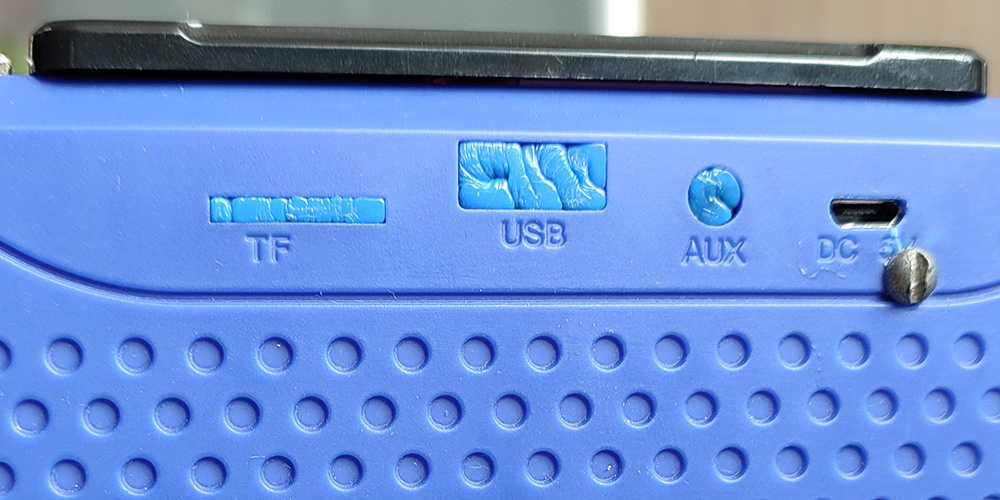

I see Barney Stinsen playing an imaginary guitar
We collect, turn on. Works. But bad. First, there is a background in nutrition; secondly, there is an additional background when you turn on the Bluetooth mode; thirdly, the volume is low.
Trouble. We will redo.
Solution 3
Obviously, to raise the volume, you need another amplifier. This time my choice fell on PAM8406 with volume controls. They will help us set the maximum volume level at which our acoustics will play without distortion.
We put a new amplifier in place of the previous one, turn it on. Works. But it’s bad =))) The background on power and Bluetooth has not gone away. We put a polar capacitor 2200 uF at the power input of the amplifier. It helped, but to some extent. Let’s try to go from the other side. We put a 470 uF polar capacitor at the power input of the mp3 module, parallel to its factory filter.
Photo
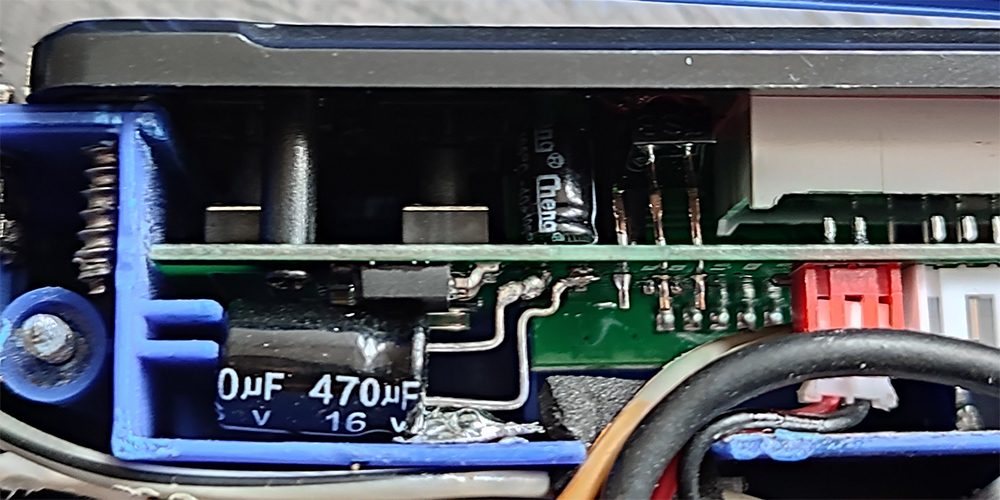
The background is already much smaller, but it is still there. We change three signal wires from the module to the amplifier to one shielded one. Ready. In all modes except Bluetooth, complete silence. In Bluetooth mode, the high-frequency squeak is audible only when you put your ear close to the speaker. I removed the large capacitor from the power supply of the amplifier, because. he ceased to influence anything.
Everything is ready, cheers? No matter how. When operating at ~ 30% volume, a full battery charge lasts for 6 hours. Few. We will change the battery.
autonomy
On sites where the same speakers are sold, the battery capacity of 1200 mA * h is indicated in the characteristics, and the inscription on the battery itself indicates this. I would like to increase autonomy at least twice. I order a 18650 battery for 3000 mA * h, and while it is driving, I take measurements of the real capacity of a regular battery. As expected, the stated figures are far from reality. LiitoKala Lii‑S2 showed 596 mA * h.
After installing a new battery (I also checked its capacity – really 3000 mA * h, even a little more), our speaker lost almost 40 hours during the week. Fully charged in 4 hours.
Also, from previous use experience, it became clear that it would be nice to add an indication of the completion of charging. We drill a hole, insert an LED into it and bring wires from the charge board to it.
Photo
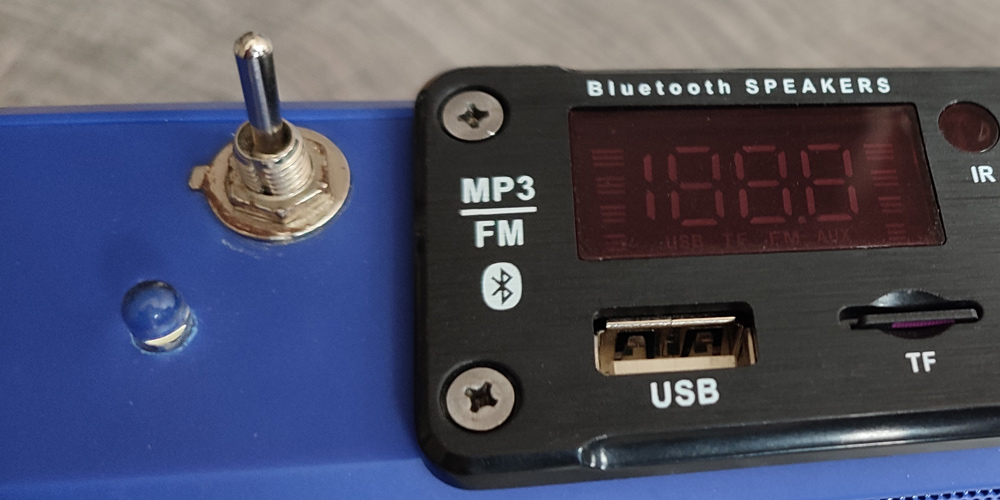
The mp3 module came with a remote control. In order not to get lost and always be at hand, stick it with Velcro directly to the body. The appearance is not particularly spoiled =)))
The attentive reader will notice two electrolytic capacitors connected in series to each speaker. They are here to cut those lower frequencies, the sound of which such acoustics cannot produce.
Results
Photo inside
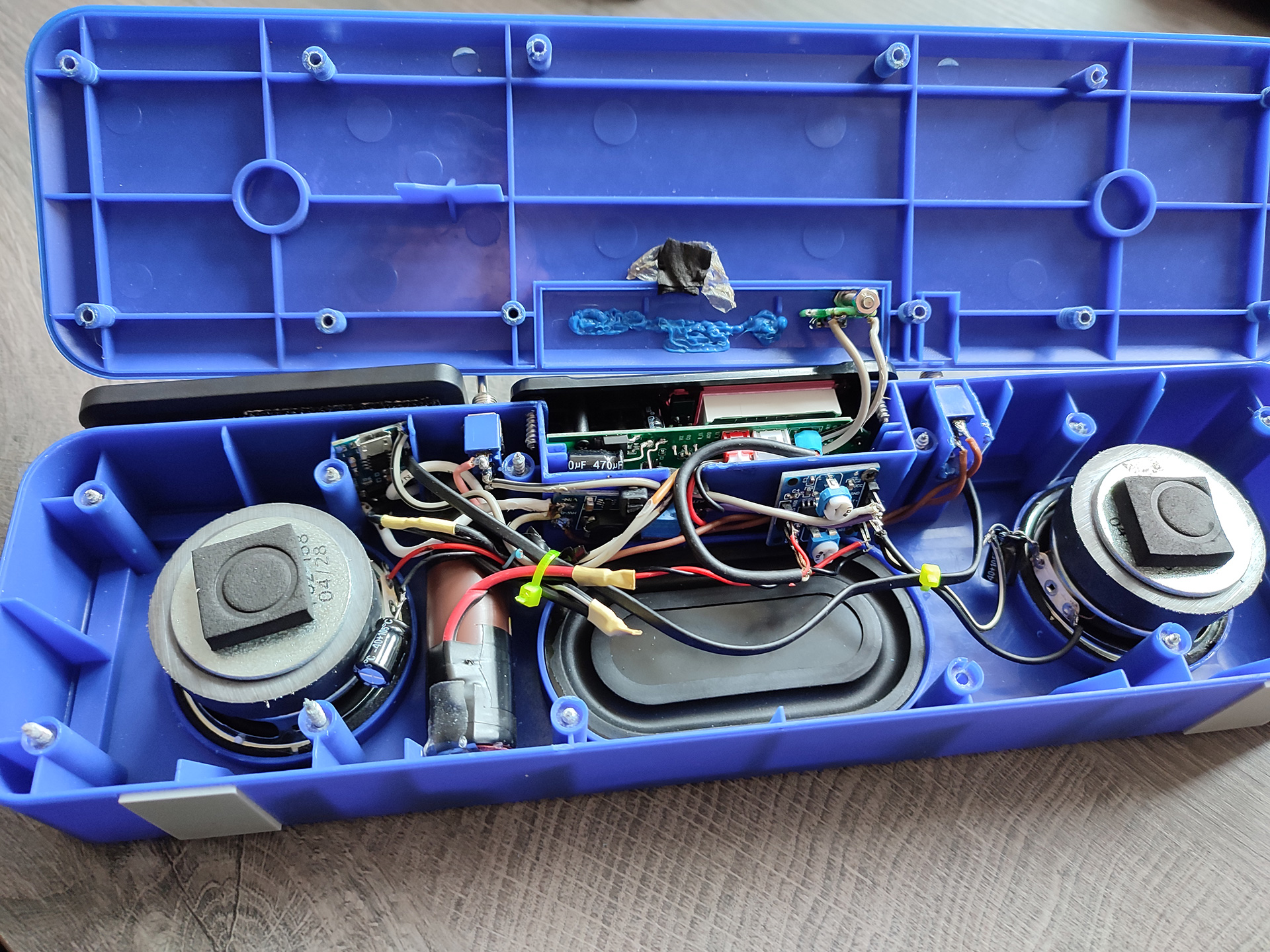
photo outside
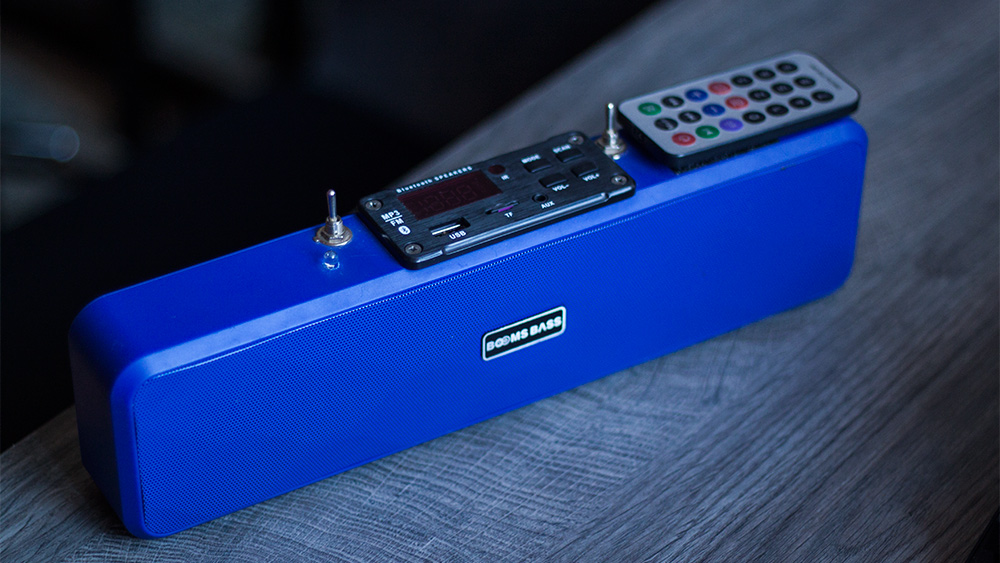
Was the game worth the candle? If I didn’t like doing these things, then definitely not. If you count the number of hours of work spent, then with the money earned over the same time, I could buy myself the same Harman / Kardon Go + Play. But the process gave me a lot of pleasure, and to use the device, to the development of which you have applied, though growing not quite from where it should be, but still my hand, much nicer. By the way, the whole story took a year and a half =))
I hope I haven’t bored you with irrelevant details. If you have any questions, write in the comments, I will answer. Thank you for your attention.



